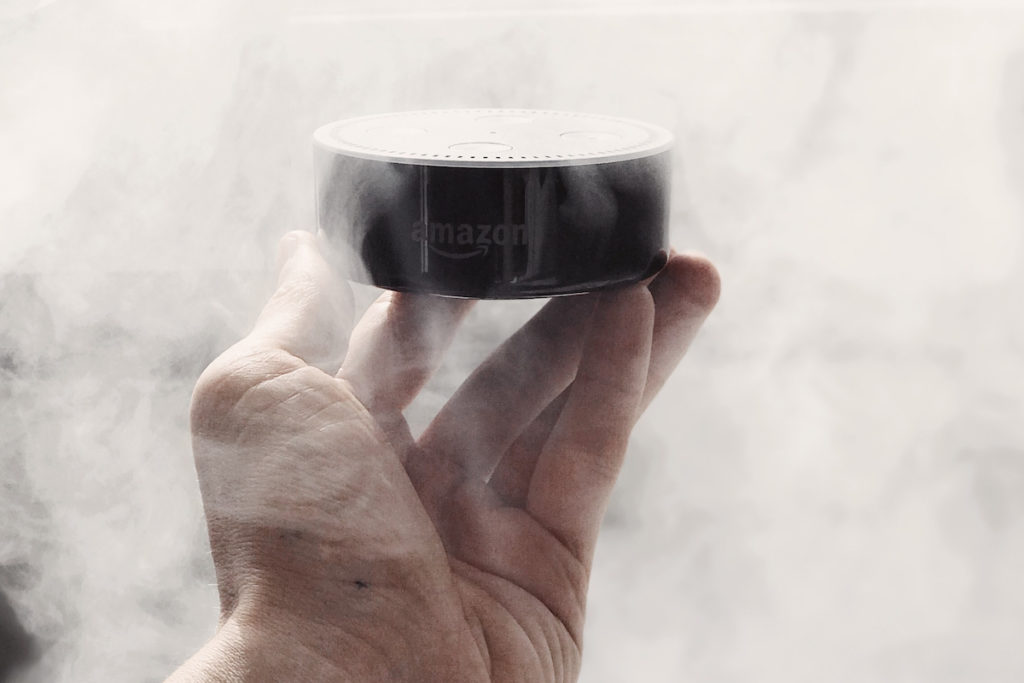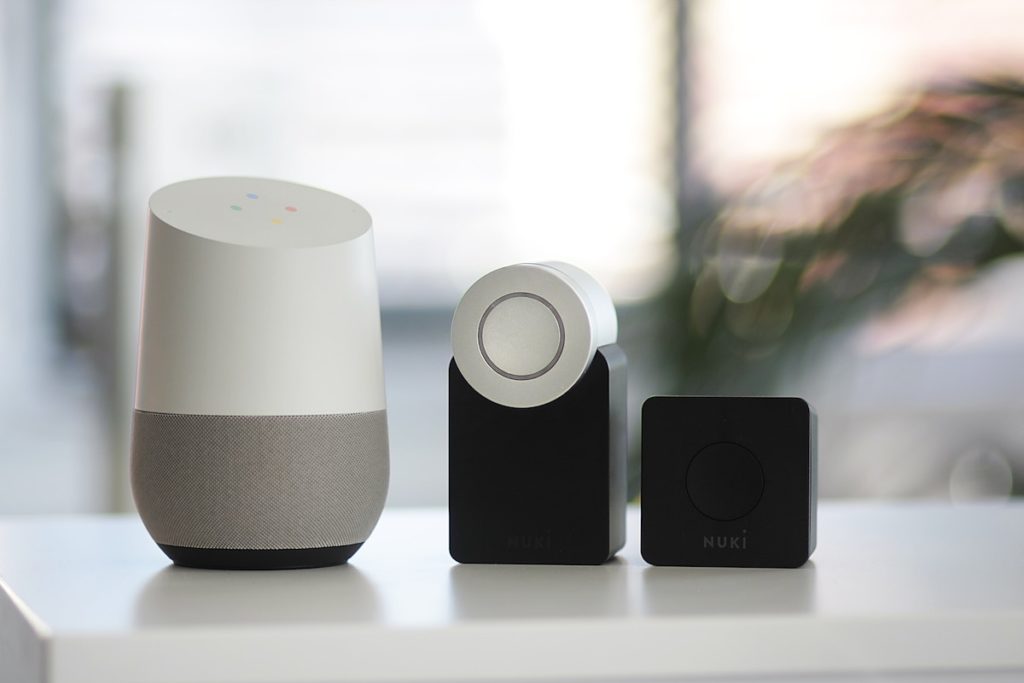Catch the marketing soundwave: from noise to voice

Over the last few years, smart speakers and voice apps have been gaining ground, despite issues with privacy and the accuracy of interactions. These technologies are making great strides and are here to stay, says Emakina Director of Technology Maurizio Pedriale. He calls on companies to embrace voice as part of the new marketing and business reality.

Maurizio Pedriale is Director of Technology at Emakina.BE.
He focuses on the agency’s technology vision and forging friendly and successful teams. Maurizio is also actively involved in the Belgian agile community and is a respected speaker at international conferences.
Voice is becoming mainstream
- Recent studies estimate that by 2024 the global smart speaker market could be worth $30 billion. Voice assistants like Alexa, Siri, Google Assistant, or Samsung Bixby are flooding the world. OK, Googoo!

- Voice-activated searches: 60% of smartphone users have tried voice search in the past year. 55% of teenagers use voice search daily. US and Chinese users are leading the way, followed by European markets.
- Amazon Echo and Google Home have built a massive user base for marketers to connect with, and new products like Amazon Echo Studio and Google Nest Mini will soon launch. The market is mature with others like Sonos One, Apple HomePod, and smart devices with displays like the Google Nest Hub, Amazon Echo Show and Echo Spot.

Why jump now?
All these changes are happening at a fast pace, now that – thanks to the cloud – computational power is commoditized and AI-as-a-service is growing. Having a voice presence will be a strategic and business differentiator, having become a reality like the web, mobile and social: brands that miss the train might never be able to catch up.
While voice continues its ascent, large platforms are still encouraging you to join them. Access to platforms like Amazon’s Alexa and others is not that expensive: they’re keen for you to try them out and the budget to launch a project with their tools is reasonable.

Where to start?
The benefit of being an early adopter is that you build a lead over those who hesitate. You have to try and try and try again to get it right, and it makes it difficult for latecomers to catch up. Moreover, investing in voice shows that you are open to innovation, which is a bonus for brand image.
“The solution is to work in an agile way,
Emakina.BE Director of Technology Maurizio Pedriale.
with focus on user-centricity through every step of the process.”
Identify your real goals
To identify your goals, you have to know what your users want, how they express this need, how best to respond to them, and how to guide the process. This means each project is as much a conversational as a technological challenge.
You need the right tone of voice, a style adapted to interact with each person, clear messages and a well-balanced number of steps to complete tasks. You need to be relevant in when and what you say, and make sure you bring added value and a good feeling to the table when you interact using voice.

Agile is the way to go
A predictable road map with briefings and delivery stages does not work. You have to be flexible, measure results along the way, and develop by a process of discovery. Voice also needs to be integrated into the ecosystem, from web and mobile to social and real-life interaction.
“As a digital agency, we proceed step by step, sprint by sprint,
Emakina.BE Director of Technology Maurizio Pedriale.
in close collaboration with the client.“
Brands must keep in mind that a voice project is not over just because it’s been launched: learnings are gathered in a continuous feedback loop and conversations evolve in unpredictable ways. People change, as do their preferences and needs. Just as with social media channels, you need to adapt along the way.
Contact Emakina and start your voice project
A few major challenges
- First, the legal and ethical questions surrounding data control and privacy have to be addressed. GDPR established strict rules and heavy sanctions that you can’t ignore.
- Having a voice app as a gimmick is counterproductive: users demand practical, useful functionality and day-to-day life added value. Applications need to be convenient, take account of context and personalise the user experience by learning from all previous interactions.
- Marketers need to master monetisation, retention, and discoverability. Awareness of voice services and their capabilities must be extended to a broader audience, one that might just benefit more from voice commands more precisely because they are not tech- or digital-savvy.
Mature technology for real interactions
One in three US marketers expects to have a voice app in 2020. All the parts of the puzzle – technology and how to use it intelligently – are falling into place.
Voice technology is becoming better every day and you can interact in advanced ways on many platforms. Voice assistants give smart, friendly tips about where to eat, drink, celebrate, shop, go on holidays, plan a route, experience culture, etc. But they also test your knowledge, manage your agenda, deliver and decrypt the news, report on sports, weather and so much more. And this is just the tip of the iceberg, Voice AI experts predict.
Babel fish comes to life
Did you know that PowerPoint allows you to add subtitles in multiple languages in real-time to the spoken words of your live presentations? You simply share a QR code or a URL at the start and every person in the audience can follow your speech in their language.
Google Assistant already translates 188 languages, extracting meaning and intent in conversations. It is learning the complex meta-layers in speech commands, to translate the true meaning back to voice. This is a work in progress, but once these bridges between languages are completed, international communication, culture, politics and education will fundamentally change. The bizarre Babel fish from Hitchhikers Guide to the Galaxy is just around the corner!
New tools, always available
These rapid changes bring along a new user interface paradigm that redefines how we interact with our surroundings. We are now truly entering the smart home world, with even IKEA joining the game. Many other domains will follow, with smart assistants popping up everywhere.
Automotive drives it forward
Companies like Cerence and General Motors subsidiary OnStar are raising the bar for in-car AI and voice (and multimodal interaction). OnStar offers hands-free calling, navigation, traffic and weather information, in-vehicle security, emergency services, and remote diagnostics. It prevents traffic accidents and can connect you with a loved one in moments of crisis. The PSA Group had adopted the system, but it is now phasing it out for its own Connect service, and calling on mobile app publishers to help them design the car ecosystem of the future.
Voice to boost commerce
A 2019 survey of North American marketers found 69% are enthusiastic about the potential for voice apps to support product discovery. And 62% expect apps to drive voice commerce transactions. Amazon’s Patrick Gauthier said retailers should prepare for voice commerce or they’ll miss the boat. He highlights the potential of voice ads and adds that contextual relevance is key, along with the need to build and retain consumer trust.
Business, government, and healthcare
Chatbots and voice, in general, are entering a new phase of adoption in B2B marketing. By 2021 the majority of B2B IT organizations will have embraced a “conversational AI-first” approach, using the technology to optimise internal processes and interactions with users, from staff and workers to partners, suppliers and the community they serve. The domains are endless, with new tools taking over repetitive back-office processes and live chat tasks requiring human agents.
Government, the healthcare industry and education will also join the parade, developing synthetic voices, predictive behaviour, medical robotics and devices, home monitoring, patient/caregiver interaction, etc.
“This is a new phase in experience marketing.“
Emakina.BE Director of Technology Maurizio Pedriale.
Digital experts have built up two decades of experience in building applications and websites. But this is a new world, just as in 1999 when web building was still young. A new, complex reality is developing rapidly with few experts and visionaries to lead the way.
Experience marketing is entering another phase, with computational power opening up new ways to tap into the senses. Marketers who seize the opportunity in a responsible and engaging way will create long-term, deep connections with their audiences across generations, backgrounds, and continents.
Let’s talk, and see how we can get you on board!
Our recent blog posts
See all blogs-
How is AI’s synthetic data enhancing User Experience Research? Technology

-
Web3.AI Rising : How new technology can add value to your business

-
How generative AI helped us create an e-commerce app – with personalised content – in just 2 weeks Technology

-
Can you build a foodie app in 3 days using Generative AI? (Spoiler alert: yes!)


